|
The History of Coalport Porcelain Works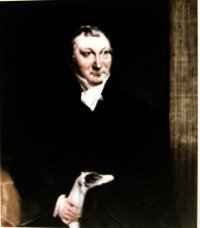
In the end of 18th century Coalport was a small settlement on the banks of river Severn, an area noted for producing ceramics since Roman times. It was called "Coalport" after the coal that was transferred from canal to river vessels at this junction. The most important industry to be attracted to the "new town" was the china manufacturing enterprise of John Rose. John Rose began his career as an apprentice at the Caughley Porcelain Manufactory on the opposite bank of the Severn. Luckily for John, he was apprenticed to Thomas Turner, an eminent engraver and potter with a revolutionary approach to making porcelain. Rose found his artist-craftsman's skills perfectly complemented those of the practical local businessman Edward Blakeway, a former Mayor of Shrewsbury and a shareholder in the famous Iron Bridge over the Severn. They bought the Caughley pottery in 1799, set up another at nearby Jackfield a year later, and shortly afterwards moved the business to Coalport. By 1796, when John Rose, Blakeway & Co moved from Jackfield to their new factory at Coalport they were producing a good quality hard-paste, fashioned in many instances after those of Flight & Barr of Worcester. The characteristics of his pioneer's effords were a greyish porcelain of poor translucency, flawed with black specks with dull grainy glaze, but stronger and less expensive than the soft porcelain of 1750-60. The wares were much superior to those of his former employer, Thomas Turner and they were very well received, justifying the opening of a London retail warehouse in 1797.
During the Coalport-Caughley period decoration in the factory was confined chiefly to painting and printing in underglaze blue, with a small amount of enameling. Dinner services decorated with chinoiserie scenes, in imitation of the blue painted Chinese export wares were especially popular, helped by the fact that the East India Company had ceased to import Oriental wares. The outstanding designs followed Caughley and included the Willow pattern and the Broseley dragon printed in two blues - a pure cobalt and lavender- touched with gold. Painted decoration was sparce on the ordinary table ware with simple floral designs in the New Hall manner. Much teaware was produced in this popular style but the shapes were quite different from those employed by the Staffordshire company. The excavations on the Caughley site clearly identified a popular form of plate with six regularly spaced indentations around the rim, they are of a type that was obviously among those sold in the white glazed state to outside decorators, including Thomas Baxter in London, Thomas Pardoe at Bristol and other decorators and retailers between about 1800-1810. The Coalport factory, being a market leader in the early 1800s produced a bewildering range of shapes and patterns but the so-called "Japan" patterns really stand out, with their areas of a deep underglaze blue with overglazed red, green and gilt embellishments. Such Japan patterns are normally associated with the Derby factory but they were common to most ceramic manufacturers. Coalport produced a great many patterns of this class and probably made more Japan patterns than the Derby factory at that period.
John Rose was not the only manufacturer of porcelain at Coalport in the early 19th Century. His younger brother Thomas Rose established a china works at Coalport in 1800, in partnership with William Reynolds (replaced after his death in 1803 by Robert Anstice) and William Horton. The wares of this short lived factory were also made of hybrid hard-paste porcelain which had minor differences in the moulding of shapes and applied decoration and are very hard to separate of those of John Rose. It is surprising that in their fourteen years of production at least 1419 different pattern numbers were made plus the unnumbered blue-and-white designs.
Soon after 1810 Coalport china was distinguished by its soft white tone, clear surface and creamy translucency. Furhter technical impruvements in the early 1820s made it yet more purely white, finer textured, with a high white translucency. A soft, smooth lead glaze was used until 1820 when Rose introduced his celebrated leadless glaze, hard, transparent and highly lustrous. The presence of lead in the glaze had an adverce effect on the brilliance of enamels laid over it, particularly the delicate tints and those prepared from gold oxide. With the new lead-free felspar glaze Coalport won the Isis gold medal of the Society of Arts. This award was used to great advantage by the Coalport company when a series of prominent printed marks were placed on their porcelains from June 1820. Under John Rose the factory continued to flourish and by the same year acquired the porcelain factories at both Swansea and Nantgarw, mainly for their equipment and not as working concerns, or even possibly to prevent their purchase by a rival. In 1821 Samuel Walker introduced a maroon ground which became a Coalport characteristic. Decoration became richer and more varied during the rein of George IV; splendid dinner, dessert and tea services were issued in brilliant colours with highly burnished gilding. From the early 1830s Coalport bone china became yet more varied in form and lavishly ornamented, rococo shapes and flower-encrustation being characteristic features until the late 1840s. Vases, clock cases, inkstands, baskets, jugs and pastille burners were overlaid with masses of tiny flowers modelled in the round. These flower-encrusted wares are generally known as Coalbrookdale and may be so marked in blue. Many factories of this period made such Dresden (Meissen) inspired wares but Coalport (and Minton) led the field in this class of porcelain. A series of wide-mouthed jugs in various sizes was a Coalport speciality, painted with large pink roses or bouquets and inscribed beneath the lip. Skilfully modelled parian statuary was made from the late 1840s but the output was small. F. W. Rose considered the firm's felspar porcelain so exquisite that he engaged in the project of coping the more magnificent pieces of Sevres, Meissen and Chelsea, reproducing the decoration, colours and marks of the 18th century. From 1802 until about 1825 John Mortlock advertised himself as London agent for “Coalbrook Dale China”. He was succeeded by A.B.&R.P. Daniell of Wigmore Street, who undertook to sell all that could be made and even succeeded in borrowing examples of Sevres from the royal collection for copying. No expense was spared in emulating the rich colour of Sevres, especially the turquoise. Coalport was the first English pottery to reproduce the famous “rose pompadour” for which a gold medal was awarded at the Great Exhibition, 1851.
|
Coalport Marks
The early porcelains 1796-1815 are mostly unmarked.
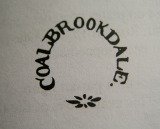
A very rare painted mark in red c.1805-10.
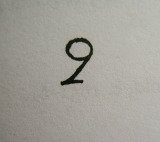
A distinctive impressed mark c.1815-1825.
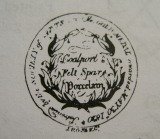
The Society of Arts felspar backstamp, printed in brown or purple c.1820-30.
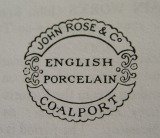
A Printed mark in blue c.1830-50.
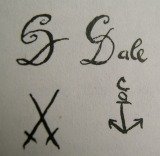
Various 19th century painted marks incl. imitation of Meissen and Chelsea.
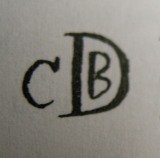
CBD Monogram painted in gold or blue c.1850-65.
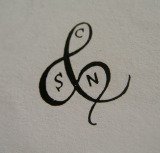
A painted mark in gold on ornamental wares c. 1860-75.
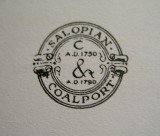
Printed mark (in brown) on tablewares c.1870-80.
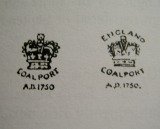
Crown printed marks (in green or pink) c.1881-1920.





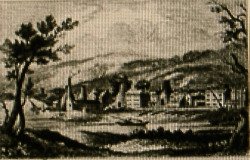 The Anstice Works were taken over by the John Rose company in 1814 and the two factories were united. The Works at Caughley were abandoned and production was focused on Coalport.
The Anstice Works were taken over by the John Rose company in 1814 and the two factories were united. The Works at Caughley were abandoned and production was focused on Coalport.
